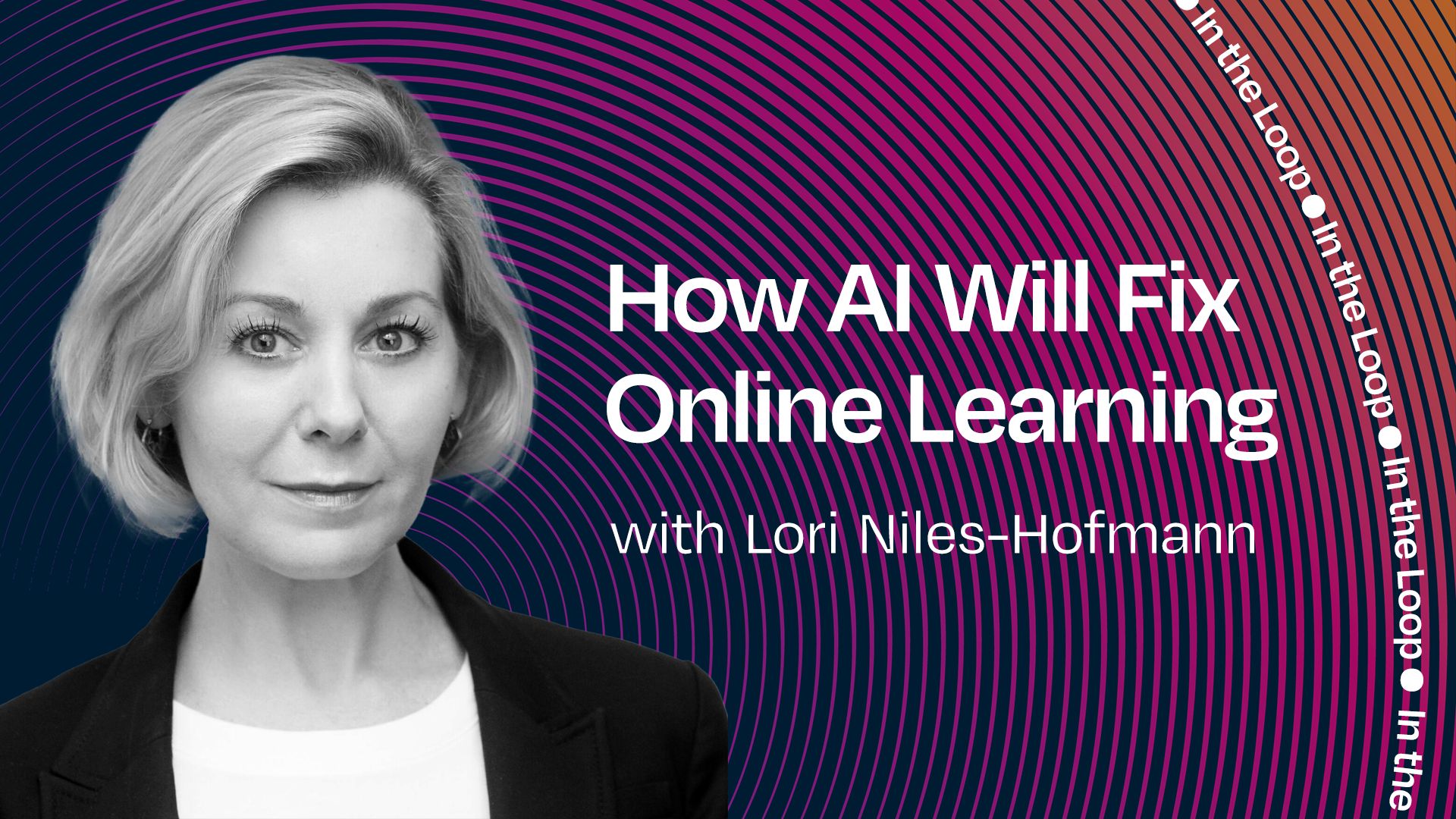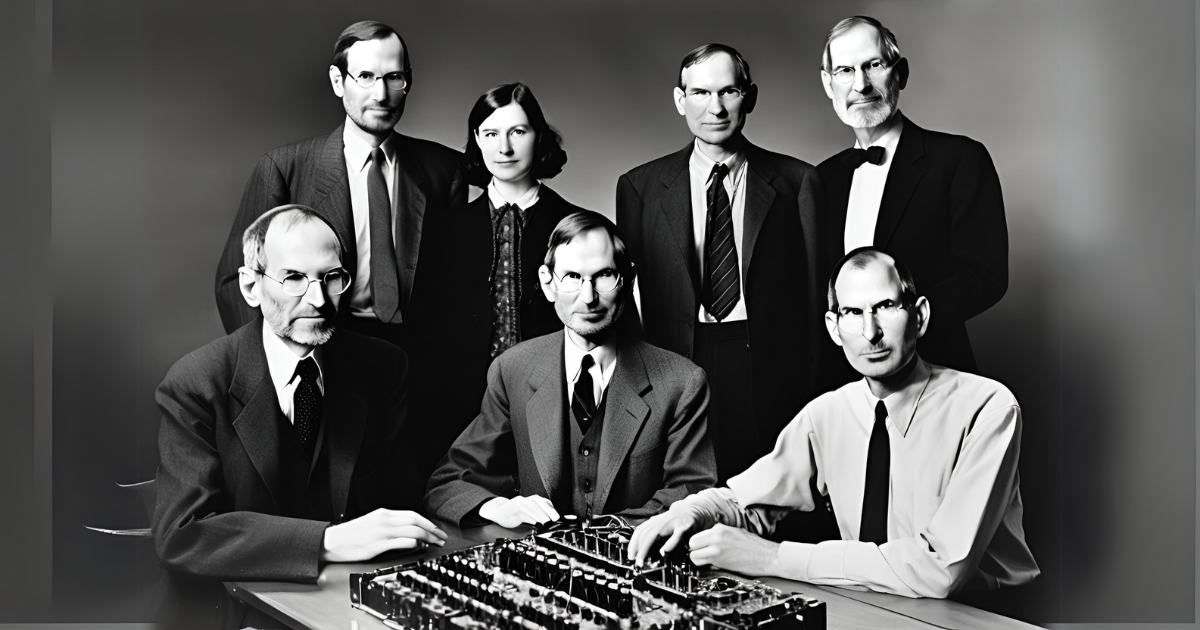Is The AI Bubble About To Burst? | In The Loop Episode 28
.png)
Published by
Published on
Read time
Category
This week, Sam Altman—arguably AI’s biggest influencer—sat down with a journalist and answered a striking question: Is there an AI bubble? His response: “My opinion is yes.”
In the same week, ChatGPT faced a mass rebellion from users desperate to get back GPT-4 and other beloved models. At the same time, Microsoft announced billions of dollars in spending on data centers and infrastructure over the next decade.
Today, we’re going to unpack this contradiction and tackle the question: Is AI really in a bubble, and what happens if it pops? This is In The Loop with Jack Houghton. I hope you enjoy the show.
Is there an AI bubble?
Let’s start right at the top with what Sam Altman actually said. Speaking with The Verge, he admitted he thinks we’re in a bubble. And the way he framed it was both clever and revealing.
When asked whether investors are overexcited about AI, he said yes. He even called it “insane” that startups with just “three people and an idea” are getting sky-high valuations. His warning: someone is going to get burned, and the losses could be enormous.
Altman’s comments came only days after what many saw as a disappointing ChatGPT product launch—or at least a disappointing reception to it. You could argue his remarks were partly damage control after OpenAI’s big flagship product of the year didn’t land as well as hoped.
His broader point was that bubbles start when smart people get overexcited about what he calls a “kernel of truth.” If you look back at most bubbles—especially tech bubbles—there’s usually a real innovation at the core. The dot-com era is a perfect example: the internet did reshape the world, even though most of the early companies collapsed. Altman is suggesting AI may be following that same path.
By comparing AI to the dot-com bubble, he’s implicitly arguing that while many AI companies will fail, there will also be the “Amazons” of this era—companies that survive and dominate. And of course, he’s suggesting OpenAI could be one of them.
Much of the recent online debate echoes this point. A tweet thread by Antonio García Martínez and Nick Baumann summed it up well because of the historical parallels it draws.
Their argument is that during the Web 2.0 boom, venture capital from wealthy investors was used to pour money into paid ads and inflate monthly active users on platforms. Crypto followed a similar model, but instead raised money from retail investors, using token rewards to artificially boost usage.
According to them, AI is now doing the same—but with venture capital dollars again. The money isn’t going to ads or tokens this time; it’s being used to subsidize compute costs, like paying API providers such as OpenAI or footing massive data center bills. This artificially lowers costs for end-users and boosts adoption.
But when the VC money dries up, usage may collapse because the products haven’t delivered sustainable value. As they put it, the industry could “collapse like a soufflé.”
In other words, every major tech boom has been fueled by external capital that subsidizes real costs, creating artificial demand. When that capital runs out, the bubble pops. And by that logic, AI may be following the same playbook.
An AI’ founder’s view on the dot-com analogy
If you’ve been following the In The Loop podcast, you might guess I disagree with the analogies and comparisons people make. But before I share my perspective, let’s look at some of the arguments and data that support the “AI bubble” view.
TechCrunch recently investigated the costs behind AI tools—coding assistants in particular. They found that margins on many of these products are either neutral or negative. In other words, they’re losing money on almost every user interaction.
And because users naturally want the best model—why wouldn’t they?—every competing company is forced to keep offering the latest and most advanced model. That drives costs higher and higher. When gross margins are sometimes negative, it’s a flashing red warning sign.
The Information shared on X, that Replit, another major AI coding platform, saw its gross margins fluctuate between 36% and negative 14%. That highlights the pain of relying heavily on third-party AI models.
For context, in SaaS businesses—companies selling software as a service on a subscription or license fee—healthy gross margins are typically in the 80–90% range.
Looking at data like this, it’s easy to assume AI must be in a bubble, propped up by venture capital subsidies, and that many companies are destined to fail.
But I don’t buy that. There are plenty of reasons why—and I’m going to go through some of them.
One of the first reasons I don’t buy the bubble argument is that the data we’ve seen doesn’t reflect how quickly these companies adapt. Successful companies have every incentive to solve margin problems.
Take Replit, for example. I mentioned earlier that their gross margins were as low as negative 14%. But after shifting from a flat pricing model to usage-based pricing, margins improved to 23%. Still modest, but it shows that strong companies figure out ways to make the economics work.
Another reason I push back on the bubble comparison is the scale of today’s infrastructure build-out. In Web 2.0, venture capital subsidies inflated usage that collapsed once funding dried up. That’s not what we’re seeing here.
Infrastructure investments in AI look nothing like a bubble—they’re unprecedented and long-term in nature. For example, Equinix just secured a gigawatt of nuclear energy through 20-year power purchase agreements for data centers still in development. That’s industrial-scale planning.
According to Bloomberg, U.S. data center construction is now on track to surpass office building construction—a remarkable shift in a country still adjusting to remote work. The slack left by reduced demand for office space is being filled by server farms powering AI.
Adoption is another huge factor. In past bubbles, adoption metrics were disconnected from real value creation—think monthly active users in Web 2.0 or total value locked in crypto. AI is different. Each interaction usually represents some form of work being performed.
Just this month—August 2025—ChatGPT hit 700 million weekly users, up from 400 million in February. It’s now on track to host more daily conversations than all human beings combined.
Token processing tells a similar story. Google announced it’s now processing 980 trillion tokens monthly—double the volume from just two months earlier, representing 104% growth. Unlike past bubbles, each token is a measurable unit of work: writing code, analyzing data, drafting documents.
Even the ChatGPT-5 backlash proves this point. Users weren’t abandoning the platform; they were demanding the return of models they loved, like GPT-4o. On Reddit, people compared losing access to GPT-4o to “losing a friend.” That kind of response shows real attachment and integration into people’s lives.
The bubble thesis also assumes costs will remain prohibitively high, making a correction inevitable. But costs are falling fast. A year ago, GPT-4 with an 8k context window cost $30 per million input tokens and $60 per million output tokens. GPT-4 Turbo cut those prices by 50–67%, and ChatGPT-5 is cheaper still.
These pricing shifts validate real demand. When Replit moved to compute-time billing, margins rose immediately. When Cursor added usage-based charges, customers didn’t churn—they paid more. That shows evidence of real value creation, not artificial demand propped up by unsustainably low prices.
Finally, most of the bubble arguments focus on consumer adoption, when the real long-term play is enterprise integration. That’s where recurring revenue lives. A recent Pymnts survey found integration complexity was the #1 barrier to enterprise adoption—ranked even higher than cost. It’s expensive, time-consuming, and company-specific, but solving it is how durable businesses are built.
What happens if the AI bubble pops?
So where could this all be heading? I think there are two likely scenarios—and I could be very wrong we’ll see.
1. Small AI bubble burst within a large infrastructure build-out
In this case, we might see a market correction in the near term—maybe equity valuations drop by 30–50%. That could mean inflated valuations cool off, many startups get acquired, and venture funding slows. But infrastructure spending will continue regardless, because major tech companies see it as essential, whatever the short-term sentiment.
Tracking this scenario would be fairly straightforward: monitor GPU utilization rates and global data center construction. Even if stock markets fluctuate, those fundamentals will show where things are going.
2. Soft landing with massive scale-up
Markets slowly adjust expectations, revenue growth begins to catch up with the money being spent, and gross margins improve across the board. In this scenario, enterprise adoption accelerates as integration challenges get solved.
Both scenarios assume infrastructure build-out continues. The real question is how bumpy the financial ride becomes.
Closing thoughts
To conclude, the AI bubble narrative definitely captures part of the truth. We’re seeing subsidized usage, inflated valuations, and unsustainable unit economics at the application layer—all classic bubble characteristics. But there’s equally strong evidence on the other side:
- Immediate utility driving rapid adoption
- Multi-decade infrastructure commitments
- Fast-falling costs of advanced models
- And perhaps most importantly, the deep psychological integration tools like ChatGPT have achieved
Taken together, those factors point to something far more durable than a typical bubble.
The next six months will test these narratives. I could turn out to be completely wrong. But if infrastructure spending keeps its current trajectory, enterprise adoption continues to expand, and users maintain—or even deepen—their reliance on AI tools, then what we’re witnessing isn’t a bubble bursting. It’s a build-out disguised as one.
Thanks for listening. I hope you enjoyed today’s episode, and I’ll see you next week.
Book a demo today.




.png)
.png)
.png)
.png)
.png)
.png)
.png)
.png)

.png)

.png)


.png)
.png)
.png)

.png)
.png)


.png)
.png)
.png)
.png)
.png)
.png)

.png)
.png)
.png)
.png)
.png)
.png)
.png)
.png)
.png)


.png)
.png)
.png)

.png)
.png)
.png)

.png)
.png)
.png)



.png)






.jpeg)